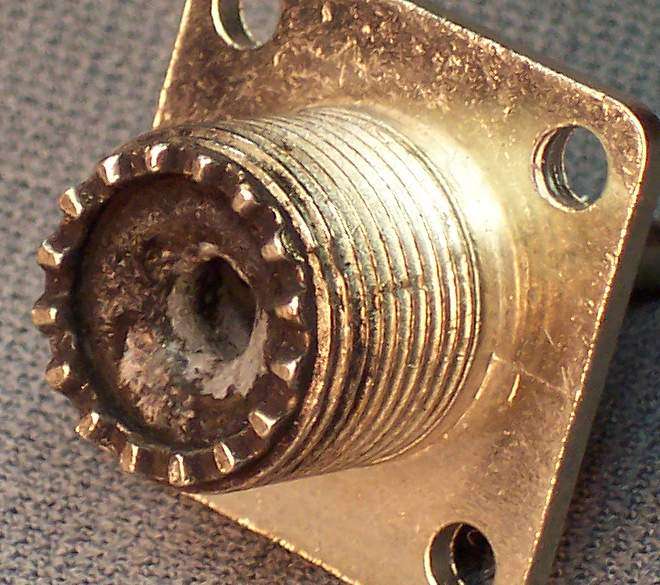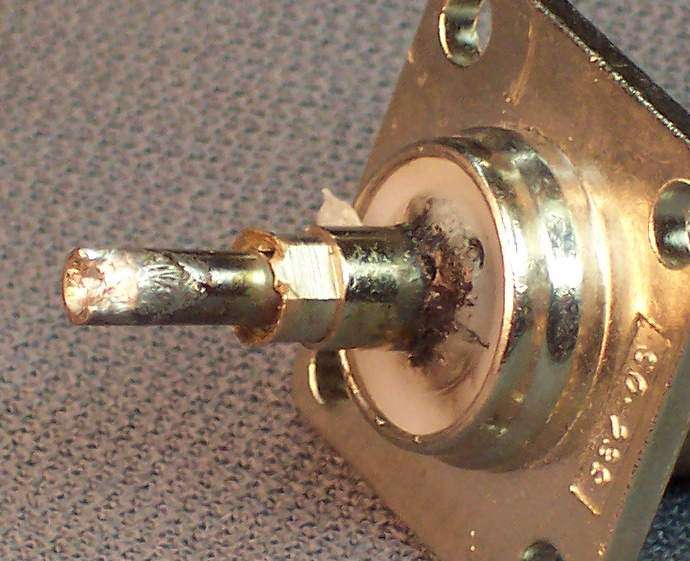Um, for starters, if it melts, its NOT teflon. Teflon, also known as "PTFE" or Polytetrafuoroethane ( I think) does NOT melt at soldering-iron temperatures.
If you touch the tip of your soldering iron to a white plastic, and it's teflon, nothing will happen. If you touch it to a white thermoplastic like the one in the pic below, the iron's hot tip will sink into the plastic as it melts.
This one is NOT teflon, even though the plastic was white before the explosion.
If you're wondering where that metal center-pin contact went, it was blown out the rear of the plug by the expanding gases created by a very large, hot arc. He thought this socket would be good enough for a 3CX3000 tube. Not quite.
Teflon is the material of choice when running more power than this kind of plug is meant to handle. Remember, if your soldering-iron tip will melt the surface of some white plastic, IT'S NOT TEFLON....
Oh, and the key to getting a PL-259 soldered without destroying it is a gun that's big enough. 250 Watts minimum. Any smaller than that, and the (long) time it takes to reach soldering temp will cause the wire insulation inside to liquefy before you have a proper solder bond. The bigger gun gets the PL-259's body up to soldering temp faster, before the plastic coax insulation can deteriorate.
73


